Current collection method Pantograph | Power supply (?) | |
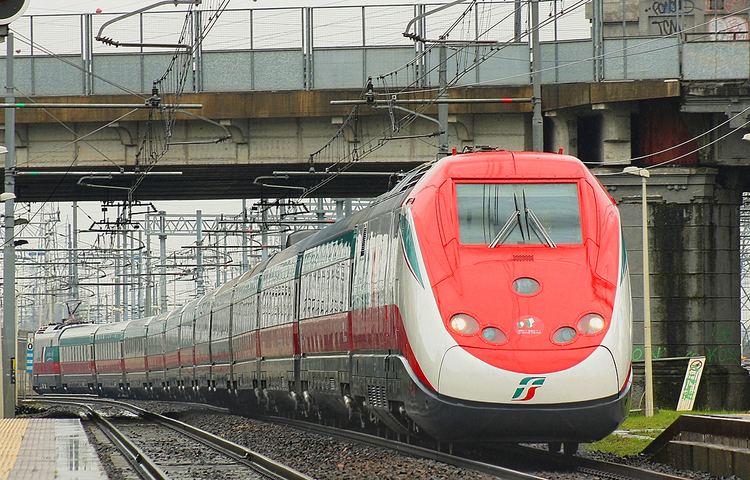 | ||
Electric system(s) Overhead catenary,3 kV DC, ETR.500 (mono)+ 25 kV 50 Hz AC, ETR 500 (bi)+ 1.5 kV, ETR 500 F (tri) Track gauge 1,435 mm (4 ft 8 ⁄2 in) standard gauge | ||
roblox train terminal fs class etr 500
ETR 500 (Elettro Treno Rapido 500) is a family of Italian high-speed trains introduced in 1993.
Contents
- roblox train terminal fs class etr 500
- hd rome termini to florence santa maria novella fs etr 500 frecciarossa full journey 06 04 13
- History
- The prototypes
- First generation
- Second generation
- Speed records
- References
Designed under the aegis of the Ferrovie dello Stato (FS), it is now operated by Trenitalia on RFI tracks.
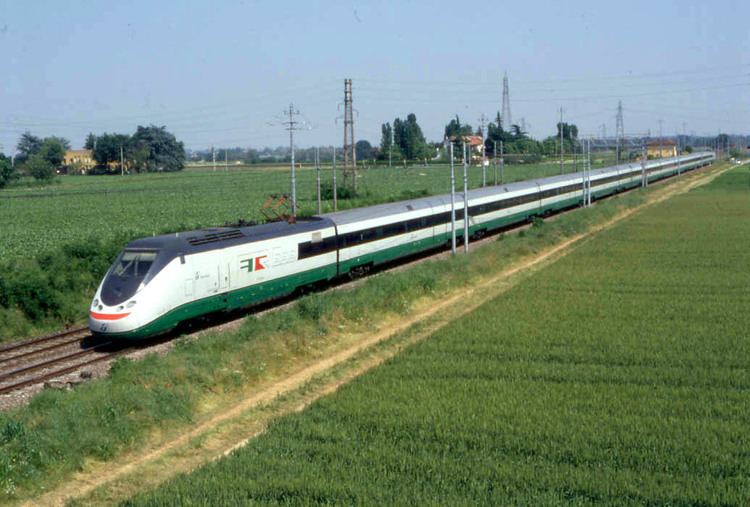
hd rome termini to florence santa maria novella fs etr 500 frecciarossa full journey 06 04 13
History
The opening of the Direttissima line, connecting Florence with Rome, in stages between 1978 and 1991 was the first high speed line in Europe. Then, in the 1990s, FS unveiled plans to build a whole new high speed network. As the larger part of the network would be suited for speeds of 300 km/h (186 mph), new, non-tilting trains had to be designed as the tilting equipment used in the ETR 450, 460 and 480 Pendolino series was not suited for speeds of over 250 km/h (155 mph).
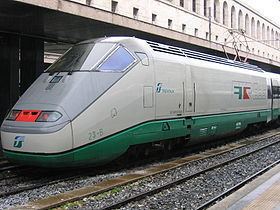
The new train was to be built by the TREVI (TREno Veloce Italiano, "Italian Fast Train") formed by Breda Costuzioni Ferroviarie, FIAT Ferroviaria, Tecnomasio and Firema Trasporti.
The prototypes
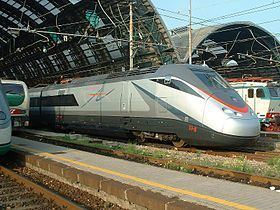
In 1988 the first prototype motorcar, called "ETR 500-X" and nicknamed "Remo",as the brother of the first Roman king, rolled out of the factory in Vado Ligure. It was tested on the Direttissima line in the combination of a measuring car and an E 444 locomotive, reaching a record speed of 319 km/h (198 mph).
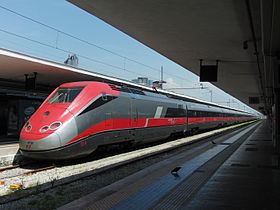
In 1990 the 2 first complete trainsets, called "ETR 500-Y" and nicknamed "Romolo", as the first Roman king, were delivered. They were used as test units between their delivery and 1995, when the first production sets entered into service.Between 1995 and 1997 they were also used in normal commercial service when there was a shortage of normal ETR.500 trainsets.
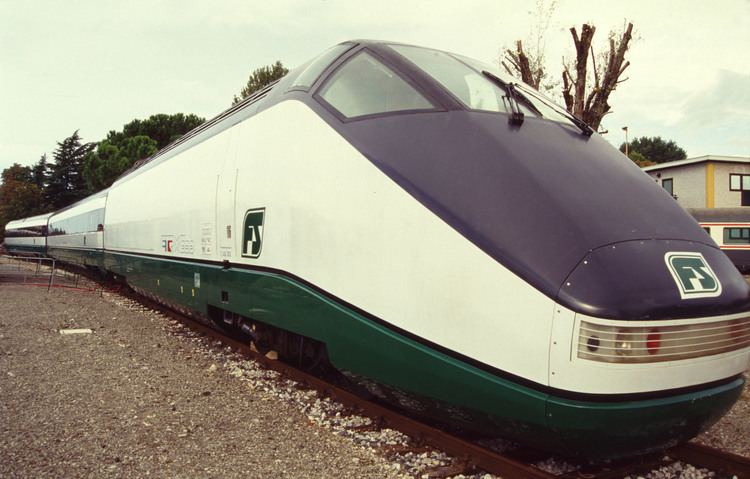
The 3 motorcars of the prototype sets are now based at different locations in Italy and unfortunately have been vandalised and graffitized. The middle cars of the 2 "ETR 500-Y" sets are now part of the two RFI ETR.500 test trains Y1 and Y2.
First generation
After the success of the 2 prototypes, FS decided to order 30 mono-current trainsets supporting the 3 kV DC supply of existing lines. Delivered between 1992 and 1996, with interiors styled by design company Pininfarina, they consist of 2 motorcars (numbered E 404 100 to 159), four first class cars, a restaurant car, and six second class cars. Although suited for driving 300 km/h (186 mph), they were limited to 250 km/h (155 mph) on the Direttissima as the current drawn from the catenary at 300 km/h (186 mph) would be too high. This was also the reason why a second generation, dual-voltage trains was ordered.
Major routes of this train were Chiusi-Milan, Florence-Naples, Milan-Rome Termini, Milan-Naples, Bologna-Rome Termini, Milan-Salerno, Milan-Venice, Venice-Rome Termini.
Between 2006 and 2008, the first generation trains have been upgraded with newly built E.404 6xx dual-voltage motorcars, coupled to the existing middle cars. All E.404 0xx motorcars of the older trainsets have been refurbished and transformed into locomotives of the type E.414, to haul EuroStarCity trains on selected routes. These trains consist of two E.414 locomotives and 10 former Intercity UIC-Z coaches. Although the coaches are "normal" Intercity coaches, they will mostly remain in semi-permanent coupled formation with the two E.414 locomotives.
Second generation
With the new high-speed lines finally in construction, FS chose to electrify the lines at 25 kV 50 Hz AC instead of 3 kV DC as used on the classic network. This allows the trains to drive at their top speed of 300 km/h (186 mph), as 3 kV is technically limited to 250 km/h (155 mph) operation. As the first generation trains can not operate off 25 kV AC, new trains had to be ordered. As the new trains can run both off 25 kV AC and 3 kV DC, they were designated P for politensione (multi-current).
The new power cars of the trains feature a totally different design than the first generation trainsets, although also designed by design company Pininfarina. These new trains, delivered between 2000 and 2005, consist in original formation of 2 motorcars, four 1st class cars, a restaurant car, and six 2nd class cars. However, with the addition of a Business class car after the four 1st class cars to all trainsets, expansion to 12 middle cars was finished in 2004.
The ETR 500 P started regular service with their commercial top speed of 300 km/h (186 mph) on the Rome-Naples and Torino-Novara high-speed lines, when those lines were opened for revenue service on 22 December 2005 resp. 1 February 2006.
The second generation trains can be divided in multiple sub-series. They were delivered in three batches:
In addition, there are rebuilt and refurbished versions:
Speed records
The last speed record is 362 km/h (225 mph) (also trainset Y1) between Florence and Bologna.(2009/02/09)(La Stampa newspaper of Turin). This represents the "indoors" world speed record, as the speed was reached in the Monte Bibele tunnel on the new high speed line between Bologna and Florence.
By 2014 Trenitalia will have 6 new ETR-1000 able to reach 360/400 km/h.
